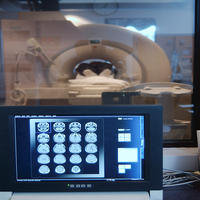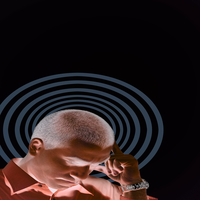The Rhythm of Walking

Earlier today I was explaining to a very fit young man that one of the reasons for his difficulties is that he rarely walks, and when he does, he has no rhythm and completely fails to move his arms. It has to do with activating both sides of the brain and improving the flow of blood and energy in the body.
He thought that I was completely daft until I showed him the impact on his anxiety and depression, simply by walking properly. He was stunned. Perhaps we shall have another convert!
“The rhythm of walking generates a kind of rhythm of thinking, and the passage through a landscape echoes or stimulates the passage through a series of thoughts. The creates an odd consonance between internal and external passage, one that suggests that the mind is also a landscape of sorts and that walking is one way to traverse it. A new thought often seems like a feature of the landscape that was there all along, as though thinking were traveling rather than making.”
–Rebecca Solnit (American Writer, 1961-)

Sex, Handedness and the Brain

I have commented before on my longstanding interest in handedness and laterality, as well as gender differences in the brain. A recurrent question when we look at both of them is whether culture has any role in the development of either. Are some of the differences in male and female brains driven by educational opportunities and cultural expectations, or is there something innate about them?
A recently published paper in PLoS ONE reports finding both sex and handedness influences on the relative size of the corpus callosum in Capuchin monkeys.
Capuchin monkeys are playful, inquisitive primates best known as the “Organ Grinder” monkeys. They have great manual dexterity, complex social behavior, and cognitive abilities. The new research now shows that just like humans, they display a fundamental sex difference in the organization of the brain, specifically in the corpus callosum, the band of white matter that connects the two hemispheres of the brain.
In the study, thirteen adult capuchins underwent magnetic resonance imaging of the brain to determine the size of their corpus callosum. The monkeys were later given a task to determine hand preference. The authors’ results led them to conclude that, as in humans, male capuchins have a smaller relative size of the corpus callosum than females, and right-handed individuals have a smaller relative size of the corpus callosum than left-handed individuals.
As the two hemispheres show greater independence of function, the relative size of the corpus callosum is expected to be smaller. This has been documented in humans, and same pattern was found in capuchins.
This finding may be related to hemispheric specialization for complex foraging tasks that require the integration of motor actions and visuospatial information. In the wild, capuchin monkeys live in trees as well as on the ground, and they are known to be very good at capturing small swift prey such as birds, lizards, and squirrels.
Musical Hallucinations

A paper on auditory hallucinations of music was presented
this afternoon at the 2007 Annual Meeting of the American Psychiatric
Association in San Diego, California.
The researcher looked at 22 people diagnosed with schizophrenia and
23 with schizoaffective disorder at Maimonides Medical Center in
Brooklyn, New York. The question was whether it would be possible to
use the presence of musical hallucinations to distinguish between
schizophrenia and schizoaffective disorder. The conclusions from the
study were that these auditory hallucinations of music were more common
in people with schizoaffective disorder and that voices with a
religious or superstitious content were more common in people with
schizophrenia.
Though it is good to see someone examine the content of hallucinations, this was a very puzzling study.
First, there is always a lot of debate around the “schizoaffective”
diagnosis. Although there are clear criteria for it in the DSM-IV, many
experts believe that most people who have been labeled
“schizoaffective” actually have a form of bipolar disorder. But in any
case, bipolar disorder and schizophrenia probably lie on a spectrum.
People’s diagnoses often change over time. Not because of disagreement
or inaccuracy, but because people change over time. The term
“phenomenological drift” has been used to describe this observation.
What that means is that we always need to be sure of the diagnosis at
the time of the study, rather than what was written in the chart in the dim and distant past.
The other point is that genuine musical hallucinations are very
rare. The world literature contains under a hundred papers in European
languages, and the classic paper,
published by German Berrios in 1991 was an analysis of just 46 cases.
Berrios is regarded by many as one of the finest phenomenologists in
Europe, so it is surprising that the investigator in New York found so
many cases.
It will be good to see if the author or someone else can replicate
the work. The classic teaching about musical hallucinations has been
that they:
- Are more common in women
- Are more common in people who have hearing problems or are deaf
- Are more likely to occur in people with neurological diseases, including Alzheimer’s disease
- If they occur in people with neurological disease, it is more
likely that the damage will be in the right or non-dominant hemisphere
of the brain. (In men, language tends to be in the dominant hemispheres
and music in the non-dominant. The pattern is a bit more complicated in
women, but they also usually sing and recognize music with the right or
non-dominant hemisphere)
A recent report from Japan reported that an elderly man with musical hallucinations was helped with the cholinesterase inhibitor donepezil (Aricept), suggesting that cholinergic neurons are somehow involved in generating musical hallucinations.
Many of us have music or tunes giong round in our heads, but that is quite different from hallucinating music.
And let me repeat: hearing things is common, and does not mean that someone is mentally ill.
Left-Handedness and Sports
There seem to be a number of potential downsides to being left-handed. Not only is the world designed for right-handers, but they may also fall victim to some illnesses.
However, there has been a lot of interest in the apparently greater success of many left-handed sportspeople. Amongst the elite in many sports, left-handers appear to be over-represented. The folk psychology explanation has been that if the effect is real, then it is likely all due to some attempt of the left-hander to over-compensate.
I’ve always been very skeptical about explanations like that, and there is new research from Australia to show that my skepticism was justified.
A study in the journal Neuropsychology shows that left-handed people can think more quickly when carrying out tasks such as playing computer games or some sports.
The research shows that in left-handed people there is a faster transfer of information between the hemispheres of the brain. This makes them more efficient when dealing with multiple stimuli, because they are able to use both sides of the brain more easily than people who are purely right-handed.
The researchers used a simple technique in which they measured reaction times of the two sides of the brain when white dots were flashed to either side of a fixed cross.
They then compared this with how good participants were at carrying out another task in which they had to spot matching letters in the left and right visual fields. This task would require them to use both sides of the brain at the same time.
Tests in 80 right-handed volunteers showed there was a strong correlation between how quickly information was transferred across the left and right hemispheres and how quickly people spotted matching letters.
But when the tests were repeated in 20 left-handed volunteers, the researchers found that the more left handed people were the better they were at processing information across the two sides of the brain. The more left-handed people were, the greater the efficiency of their hemispheric interactions.
When you have to do increasingly complex tasks, the brain recruits more circuits to help. People tend to use both hemispheres for tasks that are very fast or very complex and that require the interpretation of a lot of information. Good examples would be computer games, driving in heavy traffic or playing most sports.
Although there is a genetic component in handedness, it is an odd kind of genetic pattern and we also have some evidence that you can train yourself to make greater use of both of the hemispheres of the brain, and this can likely lead to a re-wiring of entire regions of the brain.
If you are right or left-handed try to spend five minutes each day using your non-dominant hand for some task. If you are right-handed, you might want to try shaving with your left hand. (Obviously electric or safety razors only please!). Or you might try something more complex: writing with your other hand. See if you notice any difference in yourself and feel free to report back.
Treating Posttraumatic Stress Disorder
There is an important article in this month’s issue of the journal Psychological Medicine.
Researchers from the University of Heidelberg in Germany carried out a systematic literature review concerning two treatments that are widely used in the treatment of posttraumatic stress disorder (PTSD): Eye movement desensitization and reprocessing (EMDR) and trauma-focused cognitive-behavioral therapy (CBT).
They identified eight publications between 1989 and 2005 describing treatment outcomes of EMDR and CBT in active–active comparisons. Seven of these studies were investigated in a meta-analysis.
What they found was this. Both trauma-focused CBT and EMDR seemed to be equally efficacious and any differences between the two forms of treatment are probably not of clinical significance. Our main focus now should be to attempt to establish which trauma patients are more likely to benefit from one method or the other. The authors comment that it remains unclear is the contribution of the eye movement component in EMDR to treatment outcome.
This paper is interesting in light of our recent discussions concerning brain laterality and PTSD. It seems likely that part of the mechanism of both forms of therapy is to re-wire the brain. I tend to think that the eye movements probably are of importance, since they are also used in thought field therapy which appears also to be helpful to many people with PTSD.
Cluster Headache

There are dozens of types of headache, but one of the most serious and debilitating is called “cluster headache.”
It is a very severe headaches of a piercing quality that most often occurs near one eye or temple. The pain typically lasts for fifteen minutes to three hours. The headaches are usually
unilateral and occasionally change sides.
It is difficult to overstate the severity of the pain. I once mentioned that I could always tell if there was someone in the clinic experiencing a cluster headache because everyone could hear him banging his head against the wall to try and get some relief. They may also be described as “suicide headaches:” a reference to the
excruciating pain and resulting desperation that has culminated in
actual suicide.
There are some odd symptoms that may accompany the headache, such as:
- Stuffy or runny nose in the nostril on the affected side of the face
- Red, flushed face again on the side of the headache
- Swelling around the eye on the affected side of the face
- Reduced pupil size
- Drooping eyelid
As the name implies, cluster headache usually comes in clusters that last for a week or two or as long as two months. In about 10-15% of people they are chronic. The periodicity of the clusters is remarkable and has lead many of us to speculate an involvement of the brain’s “biological clock” or circadian rhythm. In an observational study we found that clusters were more likely to begin in the month of birth of the sufferer, though we never knew how much to read into this.
Cluster headache is far more common in tall men: most are over six feet tall. When we first described cluster headache in women in the early 1980s it was a rarity, though more women have been getting cluster headache in recent years: we have no idea why. Some years ago we also described that they were more common in men who smoked heavily and drove more than 15,000 miles each year. It was impossible to say whether the smoking was cause or effect. Cluster headache is, along with diabetes and multiple sclerosis, an illness that becomes more common in peple who live far from the equator.
We and others also found that nitrates could trigger episodes in some people: that first came to light when we saw three men who used them during sex.
Cluster headaches are most likely to be due to an abnormality in the hypothalamus, which could explain why cluster headaches frequently strike around the
same time each day, and during a particular season, since one of the
functions the hypothalamus performs is regulation of the biological clock and the metabolic abnormalities that have been reported in some patients.
During the onset of a cluster headache, the most rapid abortive treatment is the inhalation of pure oxygen (12-15 litres per minute in a non-rebreathing apparatus). When used at the onset of headache this can abort the attack in as little as 5
minutes. Once an attack is at its peak, using oxygen therapy appears to
have little effect. Alternative first-line treatment is subcutaneous
administration of triptansumatriptan and zolmitriptan. Because of the rapid onset of an attack, the triptan drugs are usually taken by subcutaneous injection
rather than by mouth. While available as a nasal spray, it had been thought that the spray would not be effective to sufferers of cluster headache due to the swelling
of the nasal passages during an attack. However new research from London has shown that 5-mg and 10-mg doses of zolmitriptan intranasal spray are effective within 30 minutes and well tolerated in the treatment of acute cluster headache.
Lidocaine (or any topical anesthetic) sprayed into the nasal cavity may relieve or stop the pain, normally in just a few minutes, but long term use is not suggested due to
the side effects and possible damage to the nose and sinuses.
Previously vaso-constrictors such as ergot
compounds were also used though less so now becuase of their side effects and new options being available. Oddly enough some sufferers report a similar relief by
taking strong cups of coffee immediately at the onset of an attack.
Many different types of prophylaxis have been tried, with lithium, the calcium channel blocker verapamil at a dose of at least 240mg daily, and the anticonvulsant topiramate.
Now a new report in the journal Neurology suggests that 22 out of 26 people with cluster headache who used psilocybin reported that the drg aborted their attacks. 25 of 48 psilocybin users and 7 of 8 LSD users reported cluster period termination; 18 of 19 psilocybin users and 4 of 5 LSD users reported remission period extension. The authors conclude that research on the effects of psilocybin and LSD on cluster headache may be warranted.
From what we do understand about the pathogenesis of cluster headache it is not difficult to see how psilocybin and LSD may help. But it did worry me that this report might lead to people self-medicating with hallucinogens without any kind of support or guidance.
That being said, this recent report shows once again the importance of listening to what people have to say: they often have the answers inside of them. And those answers may lead to a new range of treatments.
Posttraumatic Stress Disorder and Brain Laterality
I’ve just received an intriguing article from an individual who’s really been through the mill with an array of psychiatric problems going back to childhood.
The last diagnosis that he attracted was posttraumatic stress disorder (PTSD), and he seems to have cured himself by a combination of omega-3 fatty acids and learning to play the banjo left-handed.
This may sound like a bit of an odd claim, but although the writer did not realize it, there is actually some solid science behind his observation.
For years now we have known that if someone is paralyzed down one side after a stroke, binding the good arm or leg leads to rapid reorganization in the cerebral cortex, as a result of which the paralyzed arm or leg may begin to regain function.
One of the most potent ways to improve the functioning of regions of the brain is to try doing things with the opposite hand: if your are right-handed, brushing your teeth or writing with your left hand or using your knife and fork the other way round can all be very illuminating, and can help train your brain. A common tactic in couple’s therapy is to get people to change some habits, like switching the sides of the bed on which a couple sleeps.
The hippocampus of the brain is involved in many functions, but key amongst them is the laying down of short-term memories. People with several stress-related psychiatric disorders, including PTSD, borderline personality disorder with early abuse, depression with early abuse, alcoholism and dissociative identity disorder all have smaller hippocampi, presumably because this part of the brain is exquisitely sensitive to cortisol: high levels can damage and destroy hippocampal cells. Antidepressant medications and some types of cognitive training are thought to lead to the growth of new cells in the hippocampus. It is also possible that having a small hippocampus may predispose someone to the development of PTSD. There is also some evidence that mixed lateral preferences and parental left-handedness may all predispose someone to the development of PTSD.
In PTSD, the left hippocampus and two other brain regions: the left anterior cingulate cortex and both sides of the insula are all smaller than normal. Regions of this small left hippocampus associated with episodic and autobiographical memory is activated by stimuli that wouldn’t have much effect in people without the problem. Some researchers have also found that if the right hippocampus is smaller and more active, it correlates with the severity of PTSD symptoms.
Adults with PTSD have a higher incidence of mixed laterality with respect to handedness than the rest of the population. This has recently also been found in children: there is a positive correlation between PTSD symptom severity and mixed laterality. This strongly suggests that neurological abnormalities may be related to the severity of symptoms in PTSD.
In PTSD, the right amygdala, a region involved in fear and rapid emotional learning and processing, is smaller than the left. In healthy volunteers it’s the same on both sides.
When people with PTSD recall the traumatic event, especially if it involved assault, they over-activate the right hemisphere of the brain. It is not just cerebral blood flow: recent experimental work has shown that PTSD may be associated with a functional asymmetry of the brain, which favors the right hemisphere.
There are actually a number of therapeutic techniques that involve trying to switch the way in which the hemispheres interact. EMDR (which the writer had tried) is one. It is also amongst the techniques developed by Paul Dennison to aid learning.
I also wonder whether the writer has accidentally happened upon a method for treating psychological reversal.
I do wish the writer well, and I also hope that some of my colleagues in research might be interested in exploring some of these training techniques in PTSD.
More on Brain Laterality and Attention Deficit Disorder
I recently wrote about the connections between attention deficit disorder and disturbances of the normal lateralization of the brain.
I had a very interesting question from a correspondent:
"Is there any CHANGE in handedness related to the use of stimulant medication?
I have been taking dexadrine (RP: That’s methamphetamine) at 60 mg/day for several months now to address ADD after diagnosis as an adult. I have found that I now use my left hand for some tasks that I would have solely used my right hand previously. For example, I am painting trim with a brush at home currently and have found myself, without forethought, switching hands and cutting in against the walls and other paint colours with my left hand at a skill level that matches my right hand. Is it possible that this is the result of increased "cross-talk" between the hemispheres? My father was not classically ambidextrous but he did play hockey and golf as a "lefty" while writing using his right hand.”
This is a fascinating question. There is evidence of shifts of functional lateralization in a number of situations, including severe changes in mood.
There is also some experimental data to support what the writer’s observations, though most of it comes from research in children.
- A study from the Netherlands showed that in children treated with methylphenidate, their manual dexterity and handwriting improved and became more accurate.
- Research from Germany using high density magnetoencephalography (MEG), showed that treatment improved activity in the frontal lobes of the brain.
- Investigators in New Mexico found that unmedicated children with ADHD had slower reaction time in their legs, which got better, particularly in the right leg, when they were given treatment.
- Another study, this time from Israel, also showed that children with ADHD had a lateralized attentional deficit that got better when they were treated.
- Children off treatment seem to have lower activity in the right hemisphere of the brain, which normalizes with treatment.
- Stimulant medications do not themselves seem to have an impact on inter-hemispheric transfer. But what it may do is to improve the imbalance between the hemispheres.
So I would suspect that the writer’s brain is becoming generally more efficient.
And his letter has also suggested a small research project.
I sense a grant proposal in our near future.
The Evolution of Handedness and Laterality
The evolution of bilaterality marked a great change in the organization of animals and to this day some illnesses are associated with disturbances of the normal balance between the two sides of the human body, most especially of the hemispheres of the brain. Presumably they would not occur if we were still arranged like jellyfish or sponges. But then we would probably not have become the species that we are without that great evolutionary leap forward.
A new report has shown that at the molecular level, the first signs of genes that are expressed asymmetrically are in the lowly sea anemone. What is even more extraordinary is that the same asymmetric genes found n the sea anemone can induce lateralization in the embryo of a frog.
This is of more than just academic interest: it tells us that the move toward lateralization was already present hundreds of millions of years ago, and primitive versions of some of the same genes in your body are also present in the simplest of organisms. This is incredible evidence for the oneness of life. There is also something else. Nature is economical: genes that are not needed are discarded. The fact that these lateralization genes have been around for such a long time indicates that they were critically important in our development. And disturbances of them may be important to this day.
The scientists doing the study have speculated that creatures with radial symmetry, like starfish, might have evolved from asymmetrical animals. I couldn’t help but remember the apparently strange speculations of Rudolf Steiner, who said that the essential form of humans was present hundreds of millions of years ago, and that other animals devolved from them. The idea was that sentience and spirituality did not just crop up with homo sapiens. but have been present since the beginning of time. Be that as it may, understanding more about the fundamental processes of lateralization will likely have important implications for understanding human evolution and disease.
“The wise man remembers that while he is a descendant of the past, he is a parent of the future.”
–Herbert Spencer (English Evolutionary Philosopher, 1820-1903)
“We are descended not only from monkeys, but also from monks.”
–Elbert Hubbard (American Editor, Publisher and Author, 1856-1915)
“As Aurobindo and Teilhard de Chardin knew, the future of humankind is God-consciousness…”
–Ken Wilber (American Philosopher, 1949-)






